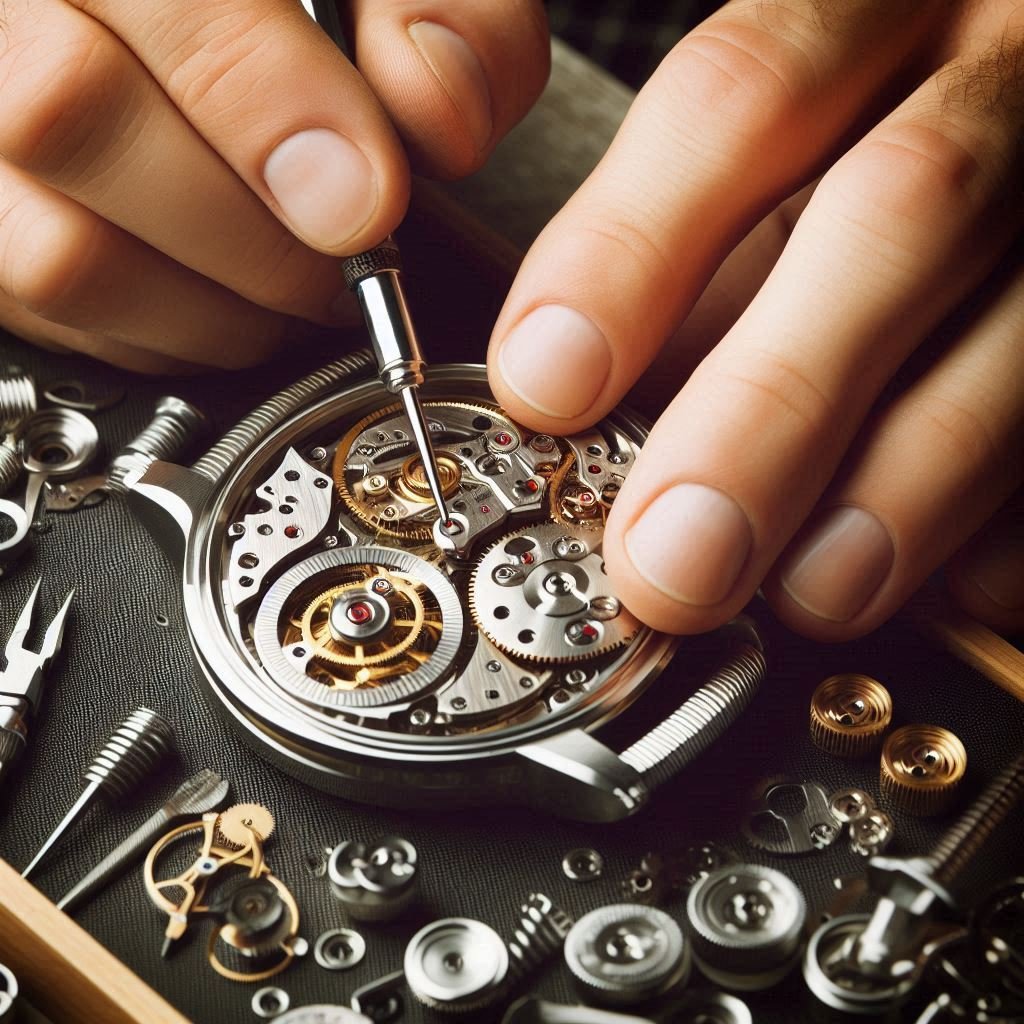Introduction
Self-winding watches, also known as automatic watches, are marvels of engineering and artistry that blend tradition with innovation. These timepieces stand out for their ability to keep ticking without manual winding, powered by the natural movements of the wearer. For centuries, watchmakers have refined these mechanical wonders, making horology a fascinating field of study. Today, self-winding watches offer not just convenience but also craftsmanship, investment potential, and timeless appeal. In this article, we will delve into the mechanics of self-winding watches, the groundbreaking contributions of prolific inventor Abraham-Louis Breguet, and the key benefits of owning one, whether you’re a casual buyer or a seasoned collector interested in both modern and vintage watches.
Table of Contents
| Main Heading | Subheadings |
|---|---|
| Understanding the Mechanics of Self-Winding Watches | – Key Components of Self-Winding Watches – How They Work |
| The Influence of Abraham-Louis Breguet: A Pioneer of Watchmaking | – The Invention of the Perpétuelle – Other Contributions |
| Benefits of Owning a Self-Winding Watch | – Convenience – Craftsmanship – Investment Potential – Personal Connection |
| Current Trends and Innovations in Self-Winding Watches | (No Subheadings) |
| Choosing the Right Self-Winding Watch | – Key Considerations |
| The Allure of Vintage Self-Winding Watches | – Tips for Buying Vintage Watches |
| Suggested Images and Visual Aids | (No Subheadings) |
| Conclusion | (No Subheadings) |
Understanding the Mechanics of Self-Winding Watches
Self-winding watches, also known as automatic watches, harness the natural motion of your wrist to power the timepiece. Unlike manual watches that require regular winding or quartz watches that rely on batteries, self-winding watches offer a harmonious balance of tradition and innovation.

Key Components of Self-Winding Watches
- Mainspring: Stores energy to power the watch.
- Escapement: Regulates the release of energy from the mainspring.
- Balance Wheel: Ensures accurate timekeeping by oscillating at a consistent rate.
- Rotor: A weighted component that moves with wrist motion to wind the mainspring.
How They Work
The rotor is the heart of a self-winding watch. As you move your wrist, the rotor swings, converting kinetic energy into stored mechanical energy in the mainspring. This energy is then gradually released to drive the watch’s movement, ensuring continuous timekeeping without the need for manual intervention.
Example Analogy: Think of the rotor like the pendulum in a grandfather clock, where motion sustains the timekeeping mechanism.
The Historical Evolution of Self-Winding Watches
Early Innovations
The concept of self-winding watches dates back to the late 18th century. Abraham-Louis Breguet, a visionary horologist, introduced the Perpétuelle in 1780, featuring an oscillating weight that allowed the watch to wind itself with the wearer’s movements. This ground-breaking design marked a significant advancement in watchmaking.
Modern Developments
Over the centuries, self-winding technology has evolved, incorporating advanced materials and refined engineering. Innovations such as micro-rotors and peripheral rotors have enabled slimmer designs and enhanced aesthetic appeal without compromising functionality.
Benefits of Owning a Self-Winding Watch
Self-winding watches offer a myriad of advantages, catering to different types of watch enthusiasts:
Convenience
Automatic watches eliminate the need for daily winding, making them ideal for those with busy lifestyles. Simply wearing the watch ensures it remains powered.
Craftsmanship
The intricate design and precise engineering of self-winding watches highlight the artistry involved in their creation. Each component is meticulously crafted to ensure reliability and beauty.

Investment Potential
High-quality self-winding watches often appreciate in value over time. Brands like Rolex and Patek Philippe are renowned for their enduring value, making these watches not only stylish accessories but also smart investments.
Personal Connection
Wearing a self-winding watch creates a unique bond between the wearer and the timepiece. The watch’s continuous operation is a reflection of the wearer’s daily activities, adding a personal touch to the accessory.
Current Trends and Innovations in Self-Winding Watches
The watch industry continues to innovate, integrating modern technology with traditional craftsmanship:
- Smart Integration: Some self-winding watches now incorporate smart features, blending mechanical precision with digital functionality.
- Sustainable Materials: Manufacturers are increasingly using eco-friendly materials, such as recycled metals and sustainable leather straps.
- Customization: Personalized watchmaking is gaining popularity, allowing buyers to customize aspects like dial design, strap material, and engraving.
Choosing the Right Self-Winding Watch
Selecting the perfect self-winding watch involves considering several factors:
Key Considerations
- Brand Reputation: Established brands like Rolex, Omega, and Seiko offer reliability and prestige.
- Movement Type: Choose between different rotor designs (central, micro, peripheral) based on your preference for aesthetics and functionality.
- Design and Style: Ensure the watch aligns with your personal style, whether it’s classic, sporty, or contemporary.
- Price Range: Determine your budget and explore options within that range, including both luxury and accessible brands.
Top Brands to Consider
- Rolex: Known for durability and iconic designs.
- Omega: Celebrated for precision and historical significance, such as the Speed master Professional.
- Seiko: Offers a range of reliable and affordable self-winding watches.
- Patek Philippe: Renowned for luxury and intricate craftsmanship.
The Allure of Vintage Self-Winding Watches
Vintage self-winding watches are highly prized by collectors for their unique designs and historical value. Here are some sought-after models:
- Rolex Submariner: Iconic dive watch known for its robustness and timeless design.
- Omega Speed master Professional: Celebrated for its role in space exploration.
- Patek Philippe Nautilus: Elegant sports watch with a distinctive octagonal case.
- Audemars Piguet Royal Oak: Revolutionary design featuring an octagonal bezel and “Tapisserie” dial.
Tips for Buying Vintage Watches
- Authenticity: Verify the watch comes with original boxes and papers.
- Condition: Check for signs of wear and ensure the movement is in good working order.
- Service History: A well-maintained service record can enhance the watch’s value and reliability.

Conclusion
Self-winding watches are a captivating blend of history, innovation, and artistry. Whether you value their convenience, appreciate their craftsmanship, or recognize their investment potential, these timepieces offer something for everyone. By choosing the right self-winding watch, you’re not just acquiring a functional accessory but also embracing a piece of horological heritage.
Disclaimer:
The content on this blog is for informational purposes only and is not intended as professional advice. We strive for accuracy but cannot guarantee the reliability of all information presented.”
If you find any incorrect information in the blog, please inform us.
“This article reflects the author’s opinions and was created with the assistance of artificial intelligence.”




